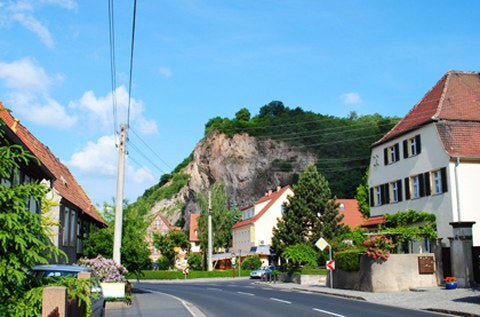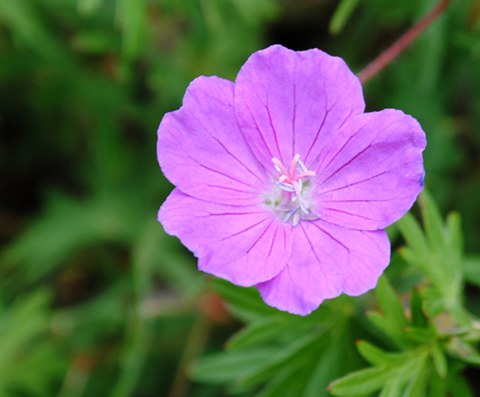The Boselgarten
Table of contents
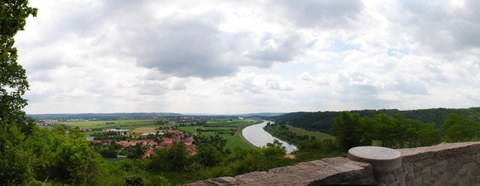
View from the Bosel Mountain to Sörnewitz
History
The origins of the Boselgarten date back to the early 20th century. Oskar Drude, professor of Botany and head of the Botanical Garden in Dresden, investigated the vegetation of the region. Due to comparatively higher temperatures and lower precipitation, the flora of the Elbe valley and its neighboring hills includes many light- and warmth-demanding species from the steppes of South-Eastern Europe. Climatic changes and afforestation forced these species back to refuge areas – one of them being the Bosel Mountain near Meißen.
When the vegetation of the Bosel Mountain was endangered by ongoing quarry activities, Drude recommended buying an area close to the break-off edge in order to stop the further expansion of the quarry. The regional conservation association “Landesverein Sächsischer Heimatschutz” followed his recommendations in 1908 and bought a parcel of land, which was expanded in 1943 to what is the Botanical Garden today. In 1957, the Bosel’s Garden became a branch of the Botanical Garden of TU Dresden and by that means obtained a solid basis for the future.
Collection
About 800 species grow within the 2.500 square meters of the Boselgarten. The collection focuses on thermophilic (warmth-demanding) species from the Elbhügelland, the upland surrounding the river Elbe. Some of the presented plants can be found frequently in the region – others have become rare in the wild. About 200 of the displayed species are listed on the Red List of Saxony, among them Anthericum liliago, Geranium sanguineum, Lactuca perennis, Pulsatilla pratensis ssp. nigricans, Drymocallis rupestris, Carex humilis and Phleum phleoides.
Climatic conditions comparable to the Elbhügelland can be found in Bohemia and Thuringia. Due to the geographic location and a greater frequency of calcareous soils, these regions show an even greater diversity of plant species. Some of the plants growing in these regions are displayed in the central part of the garden, e. g. Dictamnus albus, Adonis vernalis and different Stipa-species.
The collection of the Boselgarten aims to contribute to the conservation of plant diversity. Some species, e.g. Verbascum phoeniceum and Campanula bononiensis are cultivated with a high number of individuals under conditions that resemble the natural habitat. The main part of the ex situ conservation cultures can be found at the lower part of the garden. Adjacent to them, there is a collection of endangered agricultural weeds, including e. g. Agrostemma githago, Misopates orontium and Glebionis segetum.
Visitor information
Open from April 1st to October 3rd each Wednesday, Saturday and Sunday from 10 a.m. to 5 p.m. Visits outside the regular opening hours are possible by arrangement.
The Boselgarten will close at 4:30 p.m. on Wednesday, September 24!
The best time of the year to see the typical species in bloom is from May to June. Many of the presented species use the wet spring climate to finish their development before the dry period of the summer starts.
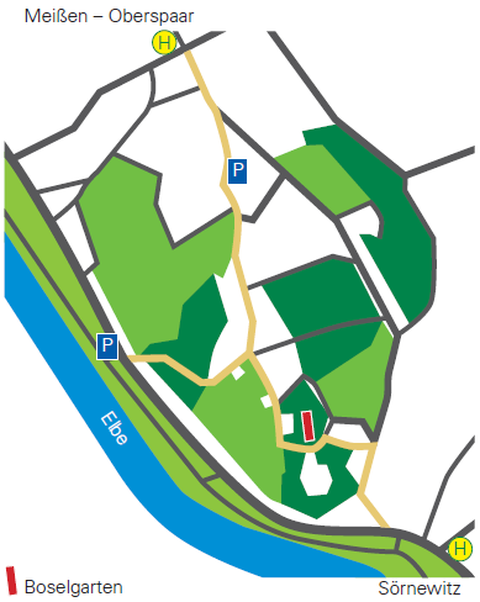
Parkmöglichkeiten und Fußwege zur Bosel.
You can reach the Boselgarten from Dresden:
* by bike: Use the bicycle trail “Elbradweg” to Sörnewitz
* by train: S-Bahn to Coswig or Meißen, followed by bus line A to Oberspaar
* by car: Parking spaces are available at the Meissner Boselweg and Meißner Straße (see map).
* on foot: Footpaths to the Bosel’s Garden are signposted
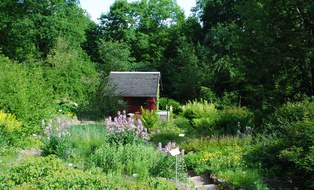 © Botanischer Garten Dresden
© Botanischer Garten Dresden
Boselgarten bei Meißen
Send encrypted email via the SecureMail portal (for TUD external users only).
Postal address:
TUD Dresden University of Technology Botanischer Garten - Boselgarten Stübelallee 2
01307 Dresden
Office hours:
- Wednesday:
- 10:00 - 17:00
- Saturday:
- 10:00 - 17:00
- Sunday:
- 10:00 - 17:00
Closed during the winter season from October 4 to March 31.

